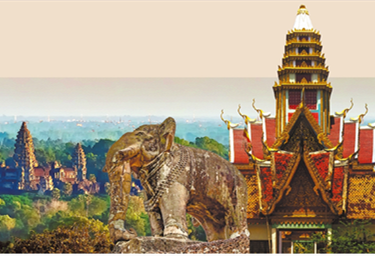Yonggu Tomb
Yonggu Tomb, the largest among the Northern Wei (386-557) mausoleums, is located in the southern Fangshan Mountain 25 km to the northwest of Datong. Construction of the tomb started in 481 and lasted eight years.
The underground palace of the Yonggu Tomb consists of a passage, a trapezoidal front chamber, a corridor and a quadrate rear chamber. The corridor connecting the front and rear chambers was paved with blue bricks. The coffin was placed in the rear chamber. To prevent excavation, the builders sealed the entrance with narrow bricks and piled stones in the passage. The vast underground palace was constructed with more than 200,000 bricks.
The construction model of the Yonggu cemetery was inherited from the Eastern Han Dynasty (25-220). A dome called Yonggu Hall was built in front of the tomb. It served as the main building and also a place of sacrifice and worship.
Planned along the axis, the Yonggu cemetery combined the tomb with a Buddhist temple, which was unique to an emperor's mausoleum in ancient times. As the only confirmed Northern Wei royal cemetery site, it is significant for studying the history and culture of the Northern Wei Dynasty.
Empress Feng (442-490), grandma of Emperor Xiaowen of Northern Wei, was buried in this tomb. In her 49-year life span, she had presided over the court twice for nearly 30 years. With the unswerving reform and implementation of localization, she had contributed greatly to national integration.


